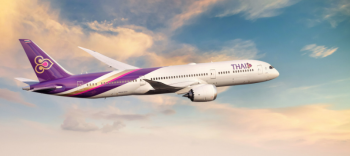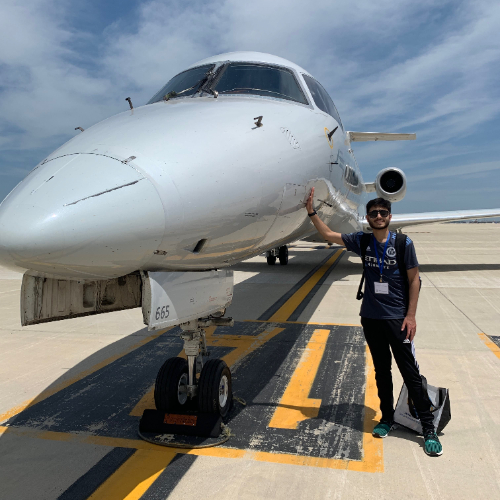Despite Boeing's commercial aircraft division having a significant absence from the 2024 Singapore Airshow, the manufacturer has still managed to garner some orders. On February 20, Thai Airways placed a landmark order for the Boeing 787, showing the carrier's aspirations for massive growth in the coming decade.

The 787 Dreamliner Order
Thai Airways announced an order for 45 Boeing 787 Dreamliners with options for 35 more. Therefore, the airline can acquire up to 80 Dreamliners in the coming years.
Brad McMullen, Boeing's Senior Vice President of Commercial Sales and Marketing, said about the order:
"Thai Airways' strategic investment in the 787 Dreamliner builds on our long-standing partnership and signifies the airline's commitment to operating a modern, efficient, and flexible fleet. This significant order will support Thai Airways' ability to meet demand, foster tourism and trade, and create future opportunities for this carrier."
A notable change Thai is making with these new 787 orders concerns the engines being used. Thai operates a fleet of just eight 787s consisting of six 787-8s and two 787-9s. The Rolls-Royce Trent 1000 engines power all of these aircraft. In previous years, airlines have continuously reported issues with their Trent 1000 engines.
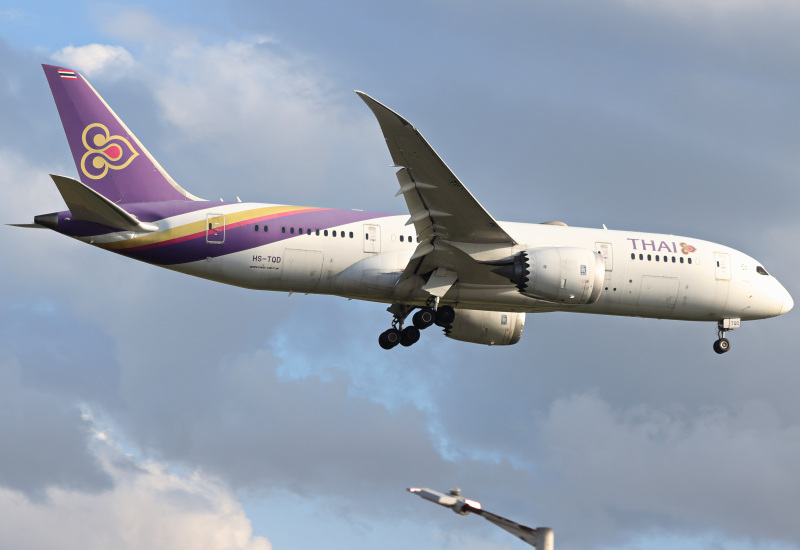
Most recently, widespread cracking in the engine's fan blades prompted many airlines to ground their fleets of 787s that utilized these engines temporarily. Thai has been eyeing a new 787 order for some time and part of completing an aircraft order includes talking with the engine manufacturer. Because Rolls-Royce engines are used on Thai's current 787 fleet, the airline was speaking with them at first.
However, in November 2023, it was reported that Thai Airways was unhappy with Rolls-Royce's pricing for new Trent 1000 engines. This is a major reason Thai has shifted to General Electric (GE) to power its new Dreamliners. The General Electric GEnx is the other (and more popular) engine option used on Boeing 787s.
Chai Eamsiri, Thai Airways CEO, said the following about the GEnx engines:
"To accomplish the Company's carbon neutral goals by 2050, the 45 new Boeing 787 Dreamliners will be equipped with GEnx engines which are known for their cutting-edge technology and reduced environmental impact. Furthermore, we are confident that the acquisition of the 787 Dreamliners will ultimately benefit our customers and support the growth of our country's economy."
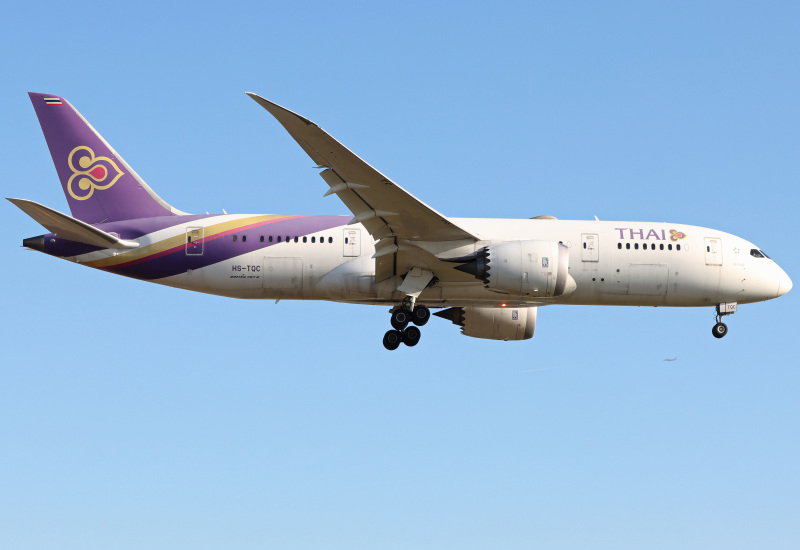
Eamsiri noted that the shift to GE engines was a "pure business decision" related to maintenance and operating costs. He also said that the eight current 787s will not be re-engined and will continue to work using their Rolls-Royce engines. Thai is soon due to receive its first GE-powered 787, a 5.5-year-old secondhand 787-9 being leased from AerCap. The aircraft is line number 746 and was previously used by Hainan Airlines and Bamboo Airways.
The Possibility of Boeing 787-10s and the 777X
Eamsiri said Thai's massive order may be split between the 787-9 and the stretched 787-10. Deliveries for this new order are expected to commence between 2027 and 2033. New 787-9s will be delivered initially, followed by 787-10s. Thai has the flexibility to convert its 787 order amongst the different variants, as stated in its official press release.
Thai has not confirmed its reasoning for considering the -10 variant. However, it can be inferred that this could be due to the aircraft's high-density seating capacity. High-density widebody aircraft have been very popular among Southeast and Far East Asian carriers.
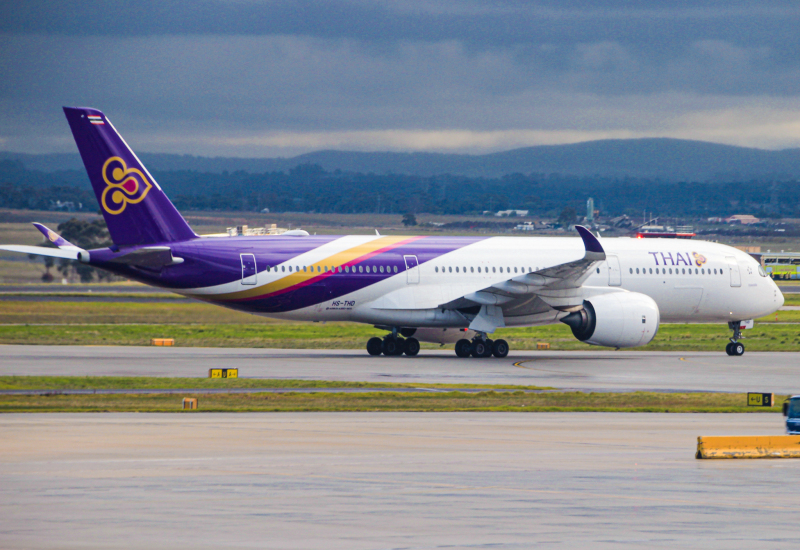
Thai Airways, Cathay Pacific, All Nippon Airways (ANA), and Japan Airlines (JAL) have all operated the high-density Boeing 777-300 (non-ER) on short-to-medium haul routes. Most of these have since been retired, with only Cathay and ANA retaining a handful in service.
Vietnam Airlines, ANA, and EVA Air currently operate 787-10s. Vietnam's two active -10s primarily service domestic sectors between Hanoi (HAN) and Ho Chi Minh City (SGN). The aircraft's high-density configuration makes it perfect for such high-demand routes. ANA and EVA Air fly their 787-10s on medium to long-haul routes.
In Thai's case, its long-haul routes are primarily flown on Boeing 777-300ERs and Airbus A350-900s. The new 787-9s will further assist with such routes. As for the 787-10s, Thai will most likely fly these on intra-Asia flights and also domestic routes within Thailand. Routes such as Bangkok Suvarnabhumi (BKK) to cities like Phuket (HKT) and Chiang Mai (CNX) are among the most popular.
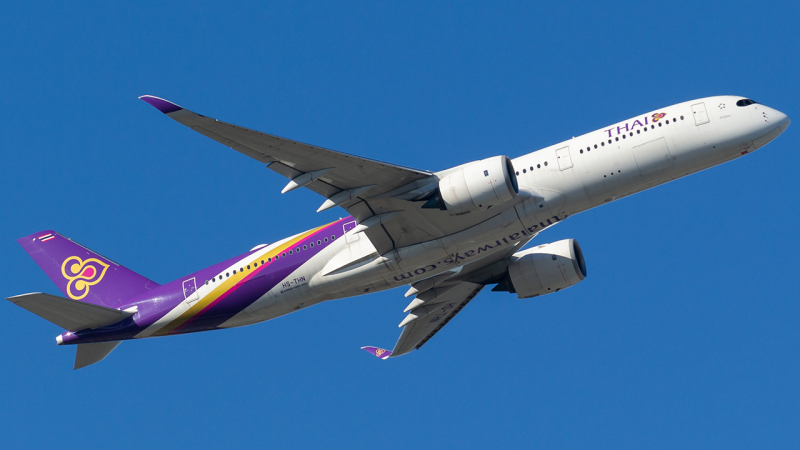
Thai regularly operates widebodies on these routes, even flying 747s between Bangkok and Phuket. Thai Airways further detailed that it has secured a pathway to acquire Boeing 777X aircraft as part of this massive 787 order. The airline has not confirmed any official 777X orders but has made it clear that due to the aircraft's impressive capabilities, it is considering the 777X for the foreseeable future.
Overall, this massive new order by Thai Airways signals the start of a new era for the airline. Although the airline has downsized heavily after the pandemic, adding up to 80 new Dreamliners shows that the carrier is poised to grow even more and contribute further to its carbon-neutral goals by 2050.
Comments (0)
Add Your Comment
SHARE
TAGS
NEWS Thailand Boeing 787-9 Dreamliner Dreamliner 787 Dreamliner Aircraft Order Singapore Singapore Airshow Thai Airways BangkokRECENTLY PUBLISHED
 Learjet Owned By Vince Neil Crashes Into Gulfstream Jet, 1 Fatality Confirmed
On February 10th, around 14:30 local time, a Learjet private jet aircraft crashed into another private jet after landing at Scottsdale Airport (SCF) in Arizona.
NEWS
READ MORE »
Learjet Owned By Vince Neil Crashes Into Gulfstream Jet, 1 Fatality Confirmed
On February 10th, around 14:30 local time, a Learjet private jet aircraft crashed into another private jet after landing at Scottsdale Airport (SCF) in Arizona.
NEWS
READ MORE »
 Seattle Plane Strike 2025: Japan Airlines and Delta Collision Raises Safety Concerns
Seattle-Tacoma International Airport saw a concerning incident on Wednesday morning when a Japan Airlines (JAL) plane clipped a parked Delta Air Lines jet while taxiing. Thankfully, no one was injured, but passengers described the collision as a frightening experience.
NEWS
READ MORE »
Seattle Plane Strike 2025: Japan Airlines and Delta Collision Raises Safety Concerns
Seattle-Tacoma International Airport saw a concerning incident on Wednesday morning when a Japan Airlines (JAL) plane clipped a parked Delta Air Lines jet while taxiing. Thankfully, no one was injured, but passengers described the collision as a frightening experience.
NEWS
READ MORE »
 Ethiopian Airlines Expands Cargo Fleet with New Boeing 777 Freighter
Ethiopian Airlines has expanded its cargo fleet with a brand-new Boeing 777 Freighter, registered as ET-BAB (MSN 68140). The aircraft was delivered directly from Boeing’s factory in Everett, Washington, USA, and landed at Addis Ababa Bole International Airport at 3:41 PM (GMT+3) on Wednesday, January 22, 2025.
NEWS
READ MORE »
Ethiopian Airlines Expands Cargo Fleet with New Boeing 777 Freighter
Ethiopian Airlines has expanded its cargo fleet with a brand-new Boeing 777 Freighter, registered as ET-BAB (MSN 68140). The aircraft was delivered directly from Boeing’s factory in Everett, Washington, USA, and landed at Addis Ababa Bole International Airport at 3:41 PM (GMT+3) on Wednesday, January 22, 2025.
NEWS
READ MORE »



